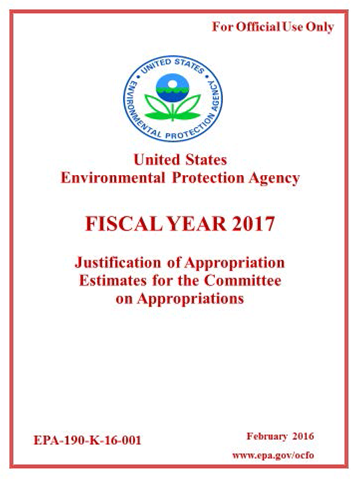- Home
- Agencies
- Department of Agriculture
- Department of Housing and Urban Development
- General Services Administration
- Department of Commerce
- Department of the Interior
- National Aeronautics and Space Administration
- Department of Defense
- Department of Justice
- National Science Foundation
- Department of Education
- Department of Labor
- Office of Personnel Management
- Department of Energy
- Department of State
- Small Business Administration
- Environmental Protection Agency
- Department of Transportation
- Social Security Administration
- Department of Health and Human Services
- Department of the Treasury
- U.S. Agency for International Development
- Department of Homeland Security
- Department of Veterans Affairs
- Goals
- Initiatives
- Programs
Primary tabs
Key to Changes
This text is Revised text
This word has been added to the text
This text is Last Published text
This word has been removed from the text
Modifed styling with no visual changes
Strategic Objective
Strengthen Human Health and Environmental Protection in Indian Country
Strategic Objective
Overview
Under federal environmental statutes, EPA is responsible for protecting human health and the environment in Indian country. EPA’s commitment to tribal environmental and human health protection has been steadfast for nearly 30 years, as formally established in the Agency’s 1984 Indian Policy.[1] EPA works with over 560 federally-recognized tribes located across the United States to improve environmental and human health outcomes. Approximately 56 million acres are held in trust by the United States for various Indian tribes and individuals. Over 10 millon acres of individually owned lands are still held in trust for allotees and their heirs.[2] Difficult environmental and health challenges remain in many of these areas, including lack of access to safe drinking water, sanitation, adequate waste facilities, and other environmental safeguards taken for granted elsewhere.
In collaboration with our tribal government partners, EPA will engage in a two-part strategy for strengthening human health and environmental protection in Indian country. First, EPA will ensure that its environmental protection programs are implemented in Indian country either by EPA or through implementation of environmental programs by tribes themselves. Second, EPA will provide resources through grant funds and technical assistance for federally-recognized tribes to create and maintain effective environmental program capacity.
External Factors and Emerging Issues
Tribal environmental and human health needs are significant. For example, the lack of access to safe drinking water and basic sanitation for tribes continues to threaten the public health of American Indian and Alaska Native (AI/AN) communities. Approximately 12 percent of AI/AN homes do not have safe water and/or basic sanitation facilities.[3] This is high compared to the non-native homes in the U.S. that lack such infrastructure. EPA, along with over four federal departments and agencies, provides a range of federal water infrastructure programs to tribes, consistent with our legal authorities and the federal trust responsibility.
There is a broad spectrum among tribes with respect to population, culture, income, geography, economic development, environmental program management expertise, and priorities. EPA also recognizes that many tribes may not have the capacity to implement programs in a manner similar to a state, where programmatically available. Further, the decision to be treated in a manner similar to a state (TAS) is voluntary, and may not be a priority to a tribe. Currently, over 200 tribes are not eligible for jurisdictional reasons to receive a TAS designation to implement federally authorized environmental protection programs, yet they are partnering with EPA to build programmatic capacity in other ways. EPA continues to play a critical role in ensuring environmental protection in Indian country.
Endnotes:
- The “EPA Policy for the Administration of Environmental Programs on Indian Reservations” can be found at http://www.epa.gov/tp/pdf/indian-policy-84.pdf.
- For more information, please see http://www.bia.gov/FAQs/index.htm.
- Indian Health Service, Sanitation Facilities Construction Program 2011 Annual Report.
Progress Update
The EPA, in consultation with the Office of Management and Budget, has highlighted this objective as a focus area for improvement. Overall, progress is being made in discrete areas to protect human health and the environment in Indian Country; however, we continue to face internal and external challenges to protecting environmental and human health on tribal lands. For example, many tribal environmental departments lack capacity to regulate pollution, are often understaffed, and face unique jurisdictional and institutional challenges. Although core tribal capacities are being maintained (i.e., environmental presence), needs in Indian Country continue to grow in number and diversity. The majority of tribes are not implementing EPA-authorized regulatory programs and EPA’s ability to fully implement programs on behalf of tribes remains a challenge.
EPA’s national tribal programs and regional offices report insufficient staff resources for EPA to conduct the type of environmental technical assistance, oversight, and program implementation likely needed in Indian Country. There is general recognition that tribal governments’ requests for grant dollars to implement programs far exceed the resources available.
In FY 2014, after internal discussions about the challenges associated with this objective, EPA determined that it should conduct a comprehensive needs assessment to better understand the scope and breadth of EPA’s work in Indian country. Upon completion of such an assessment, EPA can determine resource needs to ensure compliance and environmental protection in Indian country. Such an assessment is a multi-year effort, requiring cross-agency participation. In FY 2015, EPA will develop some foundational information to inform what resources and level of effort will be needed to conduct such an assessment. Examples of information being developed include identifying the scope of database changes that would be needed to fully integrate Indian country into key environmental data systems managed by EPA; and developing national guidelines for EPA’s regulatory responsibilities in Indian country.








